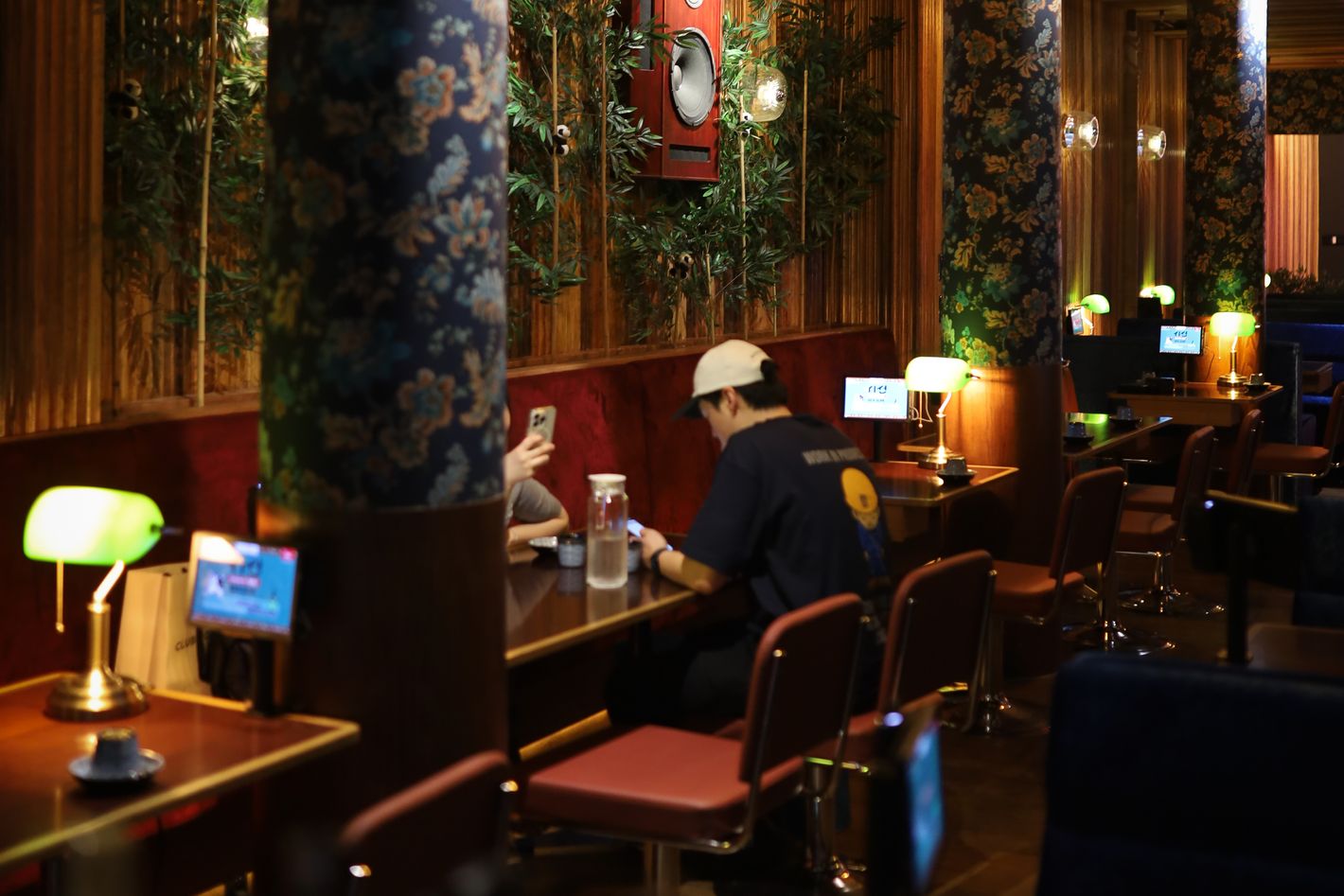when you want, where you want.
The Secret Chains of New York
 Photo: Courtesy of Izakaya Seasun
Photo: Courtesy of Izakaya Seasun
At nine o’clock this past Sunday, K-pop melodies and blue Hawaiian highballs filled the dining room at Izakaya Seasun in Nomad. A quoted 60-minute wait became 30 minutes, spent in a lobby with a kitschy fake hot spring puffing clouds from a fog machine and cartoon cats posing with beer and sake on a backlit banner. Most of the New Yorkers I knew were home watching the White Lotus finale, but this, to me, was more entertaining than TV.
A friend and I started with sashimi: salmon, hamachi, sea bream, and Wagyu, all arranged on a dome of crushed ice. Next were a basket of finger-length fish sticks and a platter of caramelized yakitori including a skewered king oyster mushroom, chicken heart, and nicely rendered chicken wings. Kimchee pancakes were tangy and soft while a Nagasaki champon hot pot was filled with mussels, pork, and a split crab. To drink: a slushy frozen beer. This was bar food as it should be, Japanese filtered through the lens of Korea. As fresh pineapple hit our table for dessert, a couple of customers wandered in looking for a table at the still-full restaurant.
Izakaya Seasun’s well-calibrated setting and array of food is not an accident. It’s the first U.S. location of a Korean chain that touts its “warm izakaya sentiment” and Japanese jazz-café décor as selling points for potential franchisees. The location on 27th Street has the same glass bricks, oversize speakers, dark-blue paisley wallpaper, and lacquered-wood panels as the restaurants in Asia: Like an Applebee’s or Cheesecake Factory, every detail is considered so that it will fit the corporate needs of a globe-spanning enterprise.
Chain restaurants aren’t typical “Underground Gourmet” fare, but increasingly I’ve been running into them by accident while looking for new places to eat. Izakaya Seasun is just the latest entry into a genre of restaurant that can be found in corners across all five boroughs, foreign-exchange chains from other countries that exist here with only one or two restaurants, never doing much to tout their corporate origins but nevertheless offering the kind of frictionless experience that comes from decades of optimization and training. Existing fans will recognize them when they spot them, but for everyone else, there are certain tells: The foreign-exchange chain is not likely to give in to the whim of local trends, instead relying on the already-proven menus and vibe they packed from home. These chains are typically young, finding success through viral marketing and social media before deciding to move to New York, often near a college campus or a community enclave. And a level of modern authenticity keeps these spots popular among the diaspora while also sparking interest from newcomers considering them for a first date, most of whom have no idea how famous they are back home.
Sometimes that initial New York City flagship turns into several, as with Heytea, the Chinese drink chain that came to New York in late 2023 and now has almost as many locations as Shake Shack. But many are one-offs with a family-restaurant feel despite the franchise framing, like Papparich, which just relocated from Flushing to the Lower East Side. Still others require specific build-outs like the dining room at Grandma’s Home and Izakaya Seasun. Other recent arrivals like I’m donut ? — which is opening its first location outside of Tokyo in Times Square this spring — and Pull-tab (which just started pouring osmanthus oolong aerofoam coffee in Bryant Park) are single-item specialists built to scale.
“Despite its low quality, the venue’s affordability has made it a popular destination among young Koreans,” one chef sniffed when I asked if he knew about Izakaya Seasun. But I think that the value proposition is a small part of the appeal. As a diner at a neighboring table dipped a slice of beef through bubbling sukiyaki sauce, my friend observed that Izakaya Seasun would be a perfect first-date restaurant, precisely because of the smooth edges and decorative stimuli that helps alleviate any awkwardness or a bad mood. “It’s fun,” said my friend. “There aren’t that many fun restaurants anymore.”
More Underground Gourmet
All Rights Reserved. Copyright , Central Coast Communications, Inc.